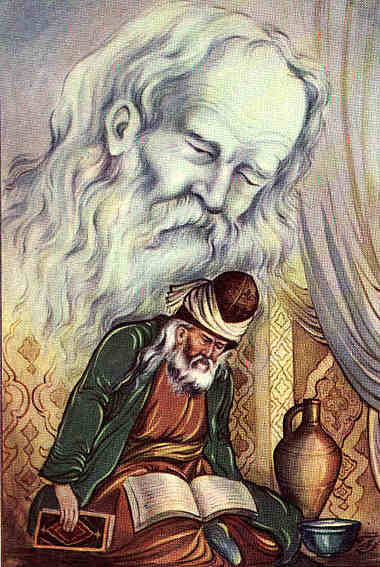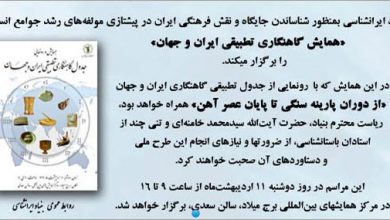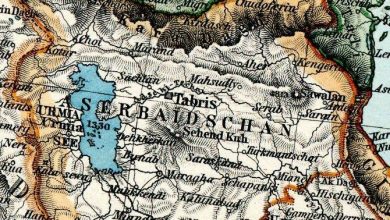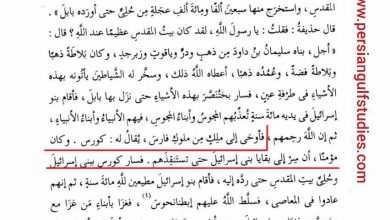Biography of the great wise man Omar Khayyam
Hakim Omar Khayyam (Khayami) In the year 439 Hijri (1048 ad) He was born in the city of Neishabur at a time when the Seljuk Turks dominated Khorasan, a vast region in eastern Iran..
He studied science in his hometown and learned the sciences of his time from prominent scholars and professors of that city, including Imam Mawafaq Nishaburi, and as they have said, he was very young when he mastered philosophy and mathematics..
Efforts
Khayyam in the year 461 Hijri left Nishapur with the intention of Samarkand and there under protection Abu Tahir Abd al-Rahman bin Ahmad , Samarkand judge He wrote his outstanding work in Algebra.
Khayyam then went to Isfahan and for a while 18 He settled there last year and with the support of King Seljuq and his minister Nizam al-Mulk, along with a group of famous scientists and mathematicians of his time, in the observatory that was established by the order of Malik Shah. Conducting astronomical research the payment.
…
Download all of this article( Hakim Omar Ibn Khayyam) In the continuation of the article
The result of this research was the modification of the common calendar at that time and the adjustment of the Jalali calendar (Title of Sultan Malikshah Seljuq) Was.
In the Jalali calendar, the solar year is approximately equal to 365 day and 5 hours and 48 minutes and 45 It is seconds. The year has twelve months 6 The first month of every month 31 day and 5 Next month every month 30 Last day and month 29 Every four years, a year is called a leap year, which is the last month 30 It is the day and the year 366 It is a day every four years, a year is called a leap year, which is the last month 30 It is the day and the year 366 In the Jalali calendar, there is a one-day difference in time every five thousand years, while in the Gregorian calendar, there is an error of three days every ten thousand years..
Return to Khorasan
After the death of Nizam al-Mulk and then Malik Shah, there was a dispute among the children of Malik Shah over the acquisition of the kingdom. Due to the riots and conflicts caused by this, the scientific and cultural issues that were of special importance before were forgotten.. The lack of attention to scientific matters and scientists and the observatory made Khayyam leave Isfahan for Khorasan..
He spent the rest of his life in the important cities of Khorasan, especially Neishabur and Merv, which were the capitals of Sanjar rule (The third son of Malek Shah) was, passed.
in that time Merv is one of the important scientific and cultural centers of the world It was considered and many scientists were present in it.
Most of Khayyam's scientific works took place in this city after returning from Isfahan.
Khayyam and the science of mathematics
Khayyam's scientific achievements for human society have been numerous and very worthy of attention.
For the first time in the history of mathematics, he admirably classified equations of the first to third degree, and then using geometric drawings based on conic sections, he was able to provide a general solution for all of them.. He used both geometric and numerical solutions for quadratic equations, but only geometric drawings for quadratic equations; And in this way he was able to find a solution for most of them and in some cases check the possibility of two answers.
The problem was that due to the fact that negative numbers were not defined at that time, Khayyam did not pay attention to the negative solutions of the equation and simply ignored the possibility of three solutions for the cubic equation.. However, almost four centuries before Descartes, he was able to achieve one of the most important human achievements in the history of algebra and science, and the solution that Descartes later (More fully) expressed, proposed.
Khayyam was also able to successfully define the number as a continuous quantity and in fact for the first time defined a real positive number and finally came to the conclusion that no quantity is composed of indivisible components and mathematically, Any power can be divided into infinite parts.
Khayyam is also looking for a way to prove “Principle of parallelism” (The fifth principle of the first article of Euclid's principles) In the book of our interpretation of Euclid's books (Description of the problematic principles of Euclid's book), was the originator of a profound concept in geometry.
In an effort to prove this principle, Khayyam made propositions that were in full agreement with the propositions made a few centuries later by the European mathematicians Wallis and Sakri, paving the way for the emergence of non-Euclidean geometries in the 19th century..
Many believe that Pascal's arithmetic triangle should be called Khayyam's arithmetical triangle, and some went even further and believe that Newton's binomial should be called Khayyam's binomial..
Of course, it is said that both Jamshid Kashani and Nasir al-Din Tosi gave more than Newton's order and the law of formation of the coefficient of binomial expansion while examining the laws related to taking roots of numbers..
The great talent of Khayyam caused him to have achievements in other fields of human knowledge.
He left short treatises in fields such as mechanics, hydrostatics, meteorology, music theory, etc.. Recently, research has been done on Khayyam's activity in the field of decorative geometry, which confirms his connection with the construction of the northern dome of Isfahan Jame Mosque..
Historians and scientists of Khayyam's age and those who came after him have all acknowledged his mastery in philosophy, to the extent that they sometimes consider him the sage of the era and Ibn Sina of the time.. Khayyam's existing philosophical works are limited to a few short but deep and fruitful treatises. Khayyam's last philosophical treatise shows his mystical tendencies. But apart from all this, Khayyam's greatest fame in the last two centuries in the world is due to his quatrains, which were first translated into English by Fitzgerald and made available to the world, and his name is among the four great poets of the world, namely Homer, Shakespeare, Dante. And Goethe put.
Khayyam's quatrains because of the very free translation (And sometimes wrong) His poetry has caused some unacceptable misinterpretations of his personality.
These quatrains have intensified the discussion and disagreement among the analysts of Khayyam's thought. Some are satisfied with the appearance of his quatrains to express his thoughts, while others believe that Khayyam's real thoughts are deeper than they can be expressed only by the superficial interpretation of his poetry.. Khayyam after a fruitful life finally in the year 517 Hijri (According to most sources) Neyshabur died in his homeland and with his death one of the most brilliant pages in the history of thought in Iran was closed.
Click on the link below to download the PDF book of Omar Ibn Khayyam







